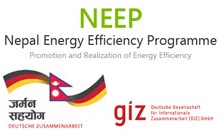Overview
A furnace is a device used for heating. The name derives from Latin fornax, oven. In the context of industrial applications it can be defined as an equipment to melt metals for casting or heat materials for change of shape ( rolling, forging etc) or change of properties (heat treatment).
Depending on the type of furnace different forms of fuel or energy used are electricity, coal, diesel oil, furnace oil etc.
Design & Operation
Based on the method of generating heat, furnaces are broadly classified into two types namely combustion type (using fuels) and electric type. In case of combustion type furnace, depending upon the kind of combustion, it can be broadly classified as oil fired, coal fired or gas fired.
- Based on the mode of charging of material furnaces can be classified as (i) Intermittent or Batch type furnace or Periodical furnace and (ii) Continuous furnace.
- Based on mode of waste heat recovery as recuperative and regenerative furnaces.
- Another type of furnace classification is made based on mode of heat transfer, mode of charging and mode of heat recovery. Schematic of general classification of furnaces is as shown in the figure below.
Characteristics of an Efficient Furnace
Furnace should be designed so that in a given time, as much of material as possible can be heated to a uniform temperature as possible with the least possible fuel and labor. To achieve this end, the following parameters can be considered.
- Determination of the quantity of heat to be imparted to the material or charge.
- Liberation of sufficient heat within the furnace to heat the stock and overcome all heat losses.
- Transfer of available part of that heat from the furnace gases to the surface of the heating stock.
- Equalization of the temperature within the stock.
- Reduction of heat losses from the furnace to the minimum possible extent.



